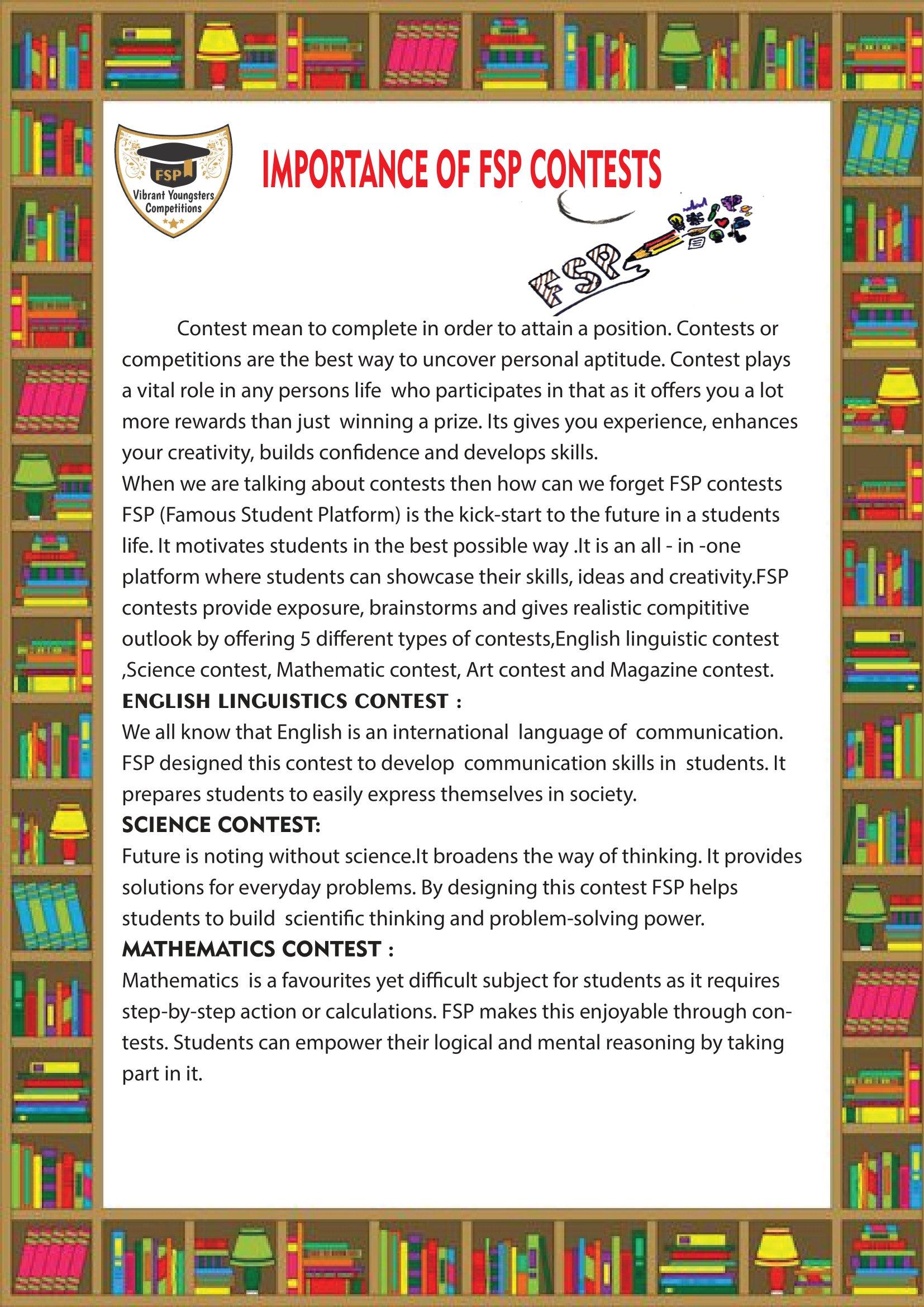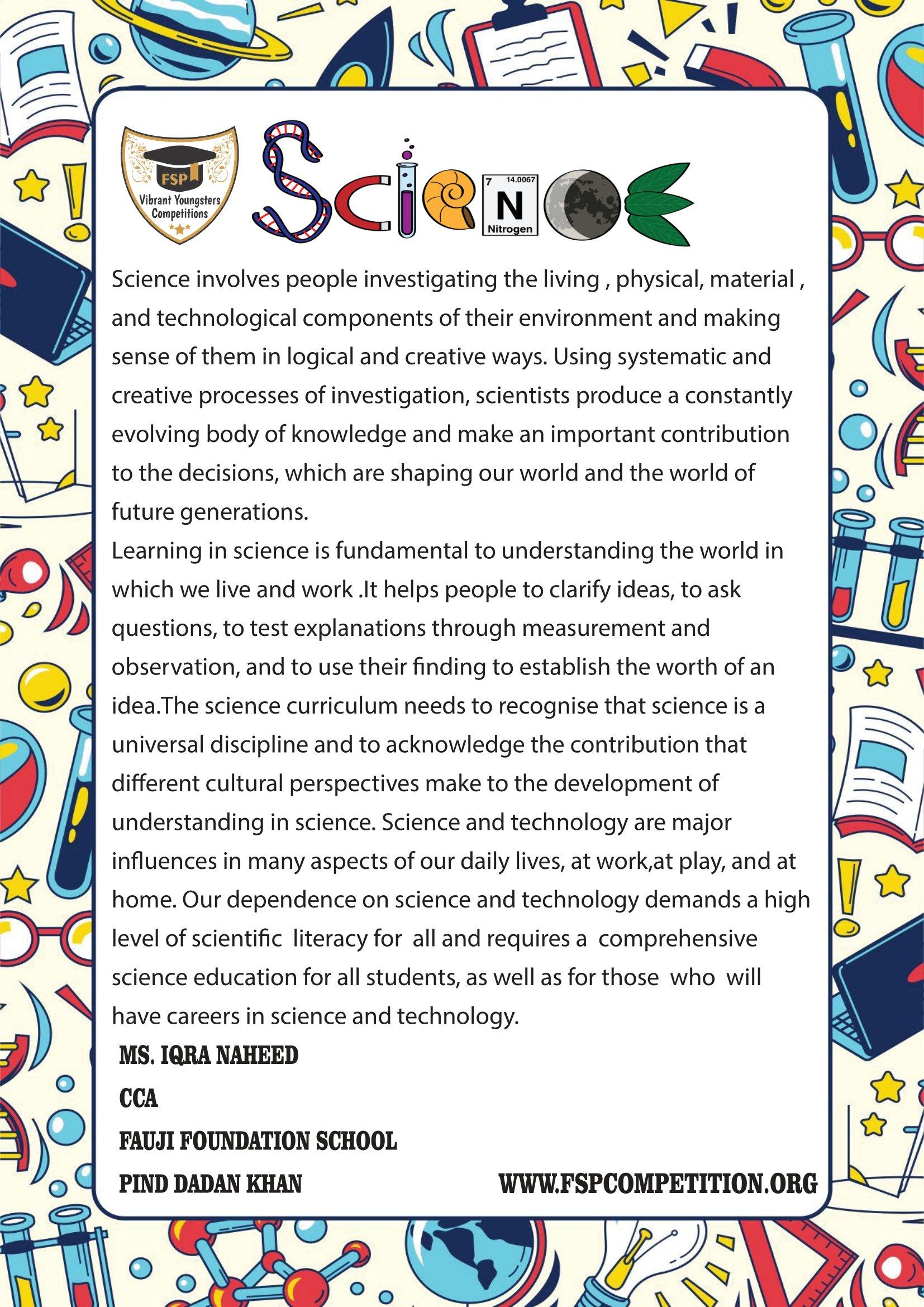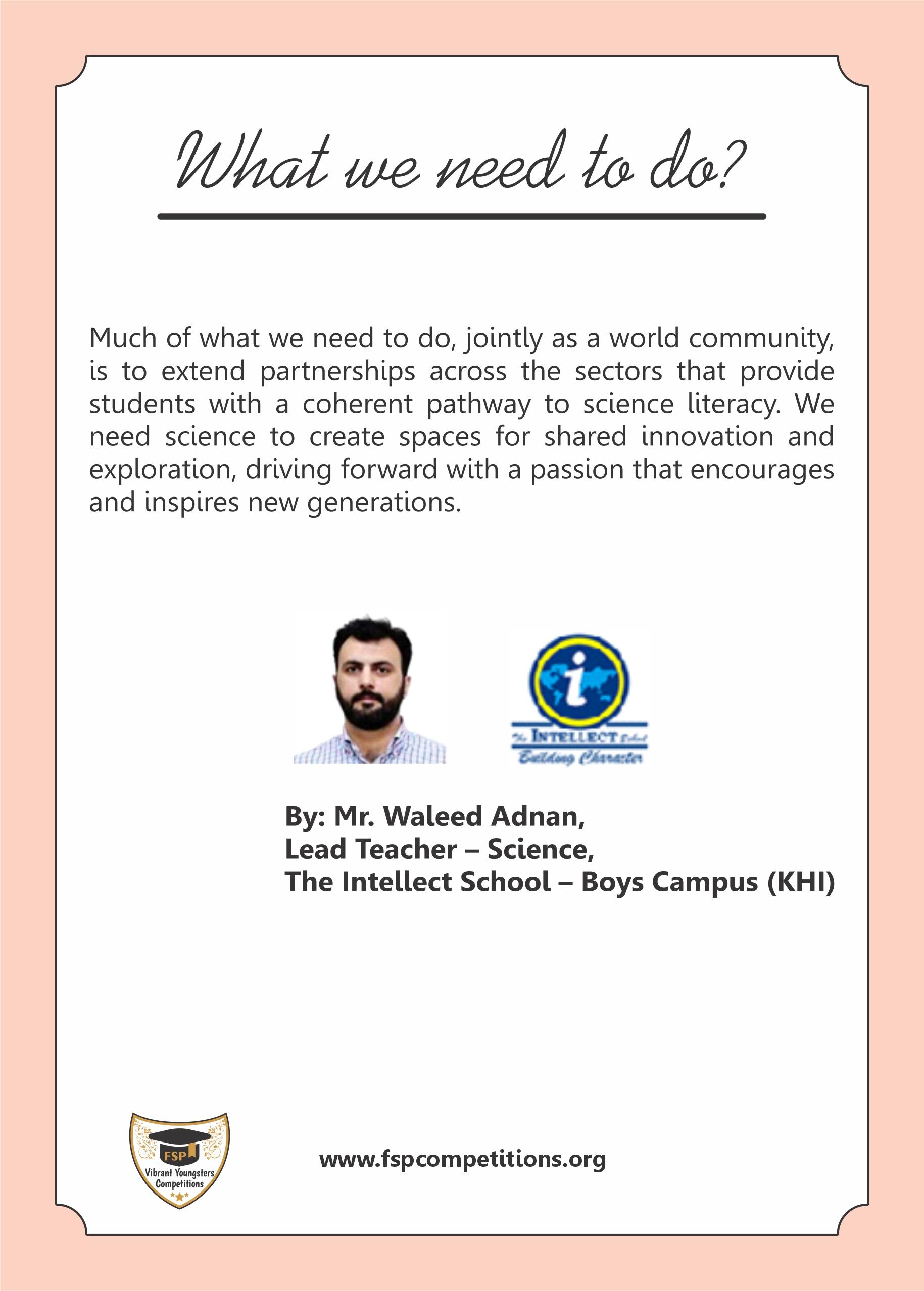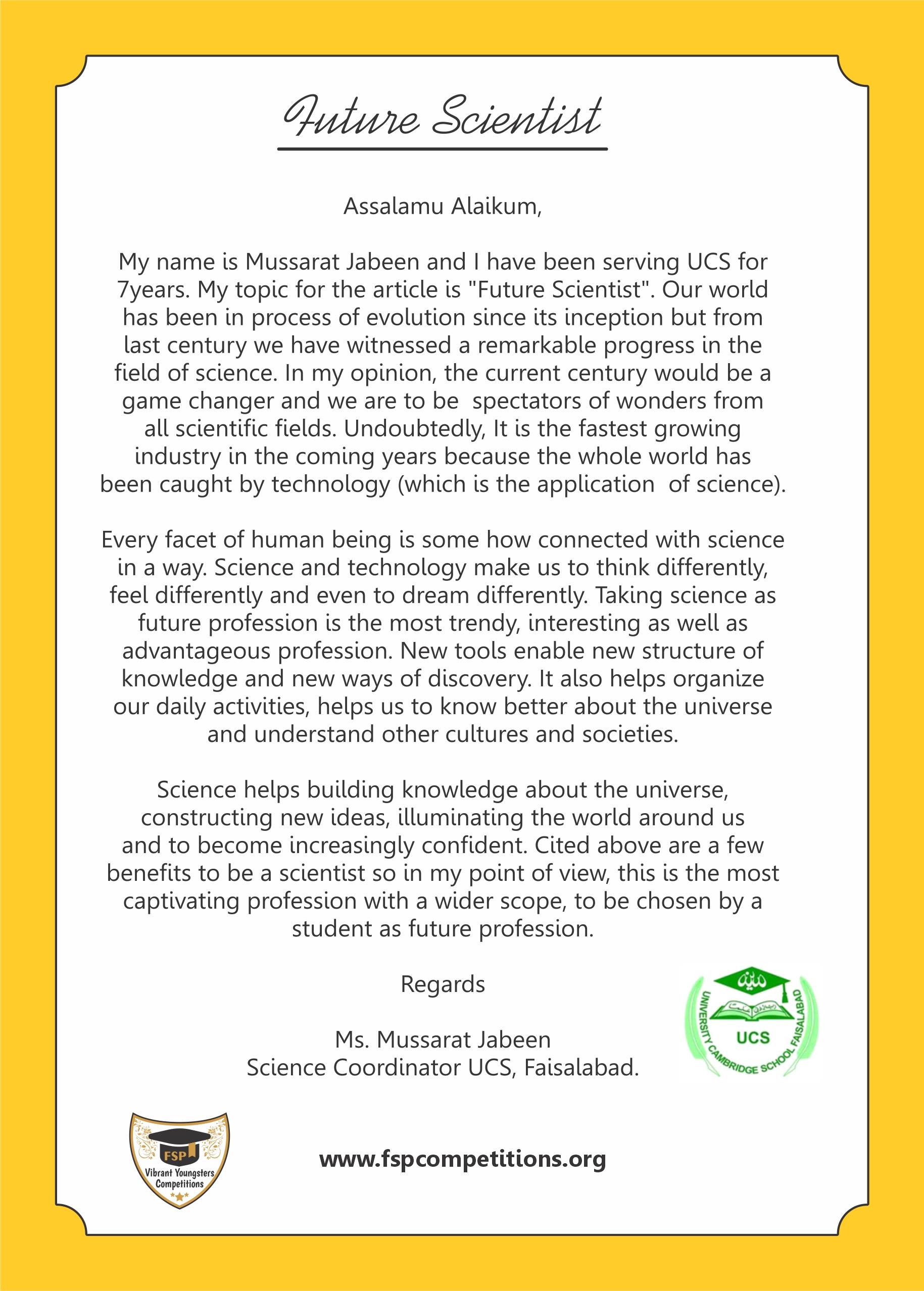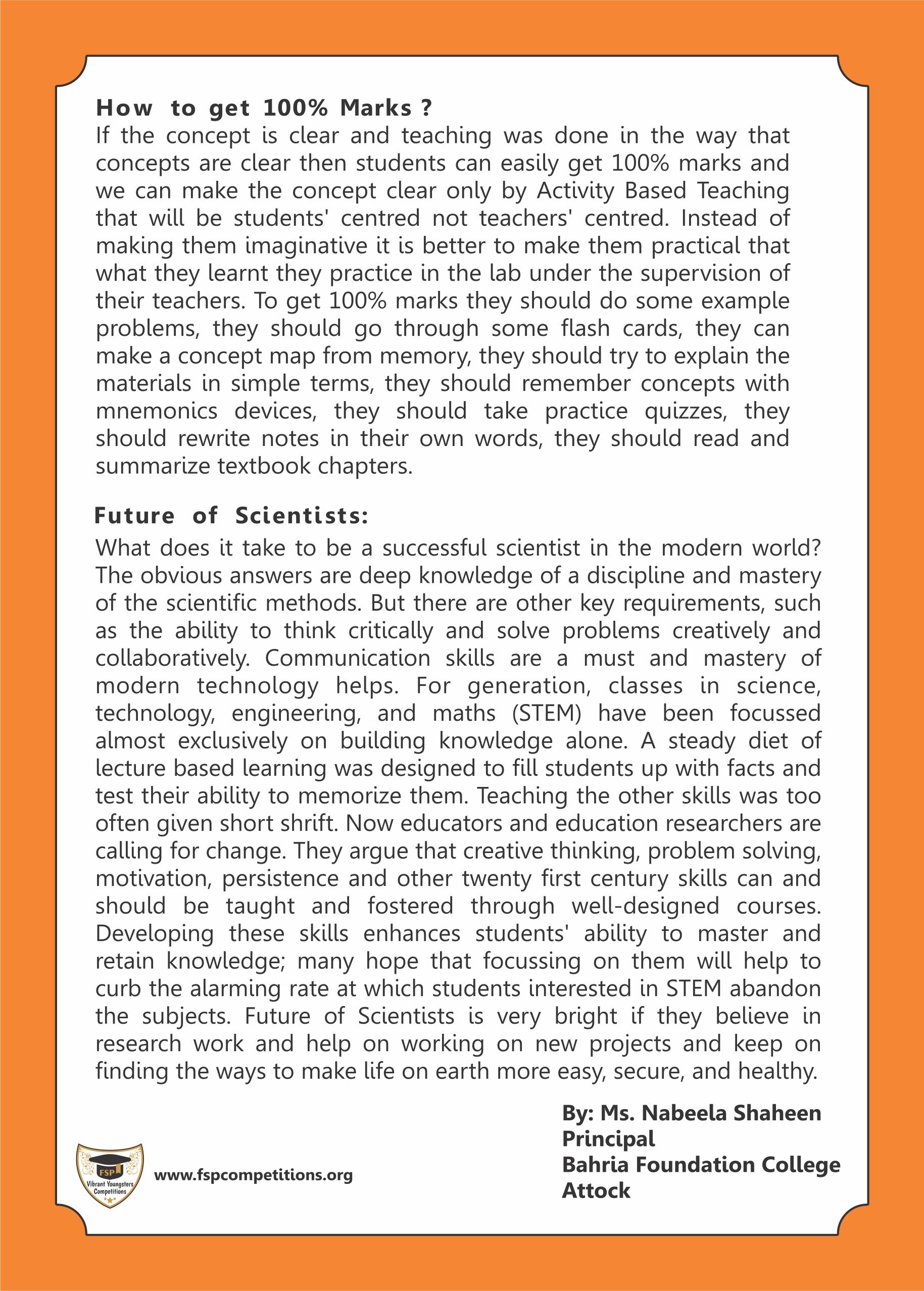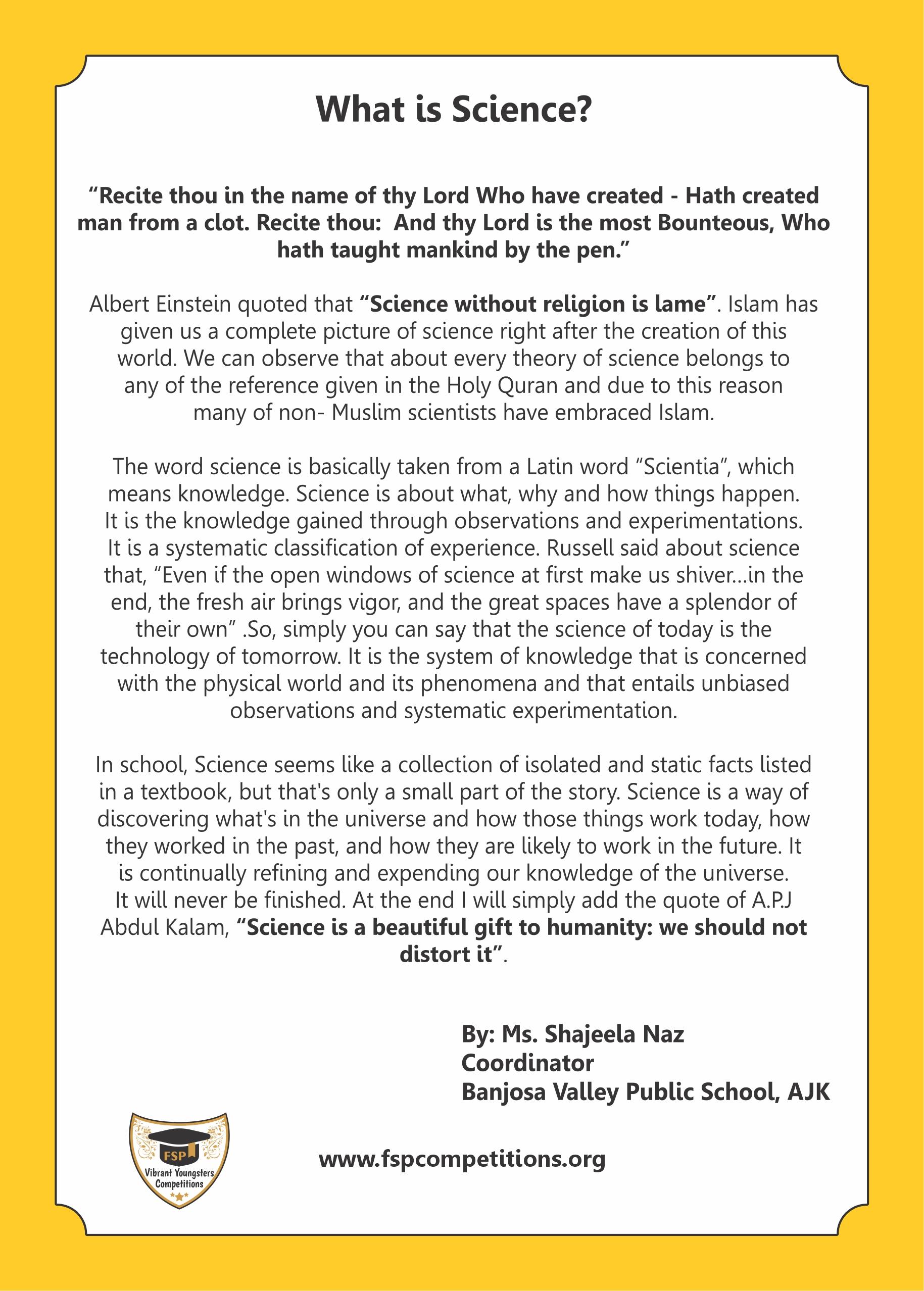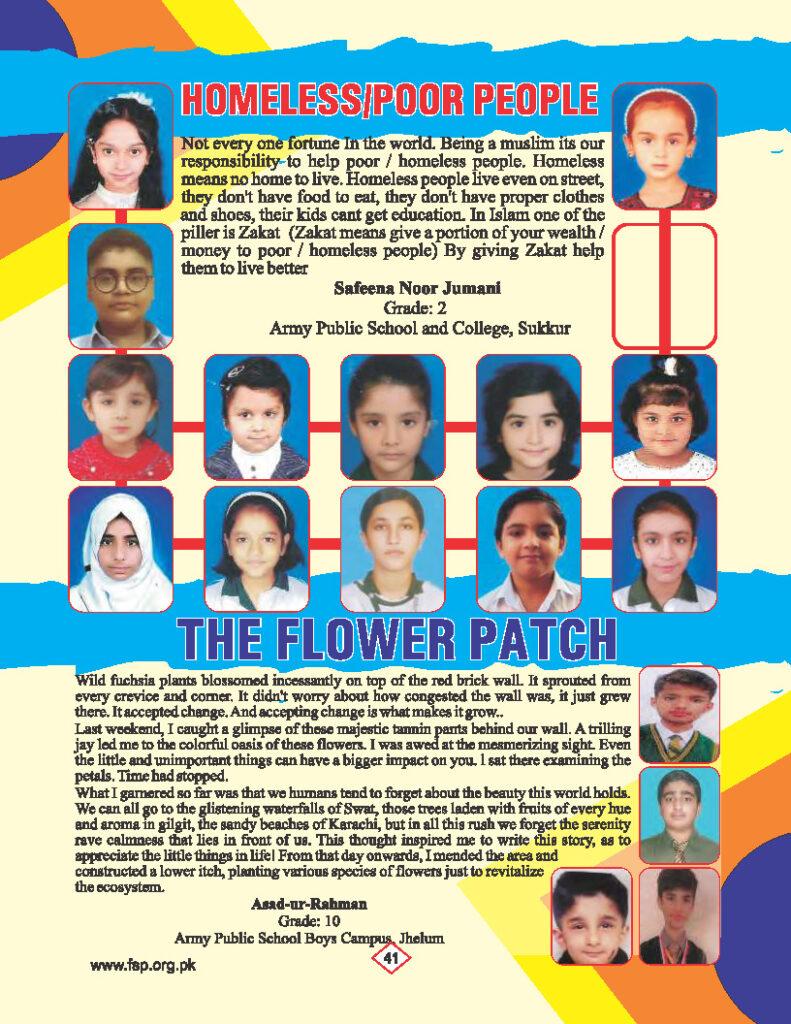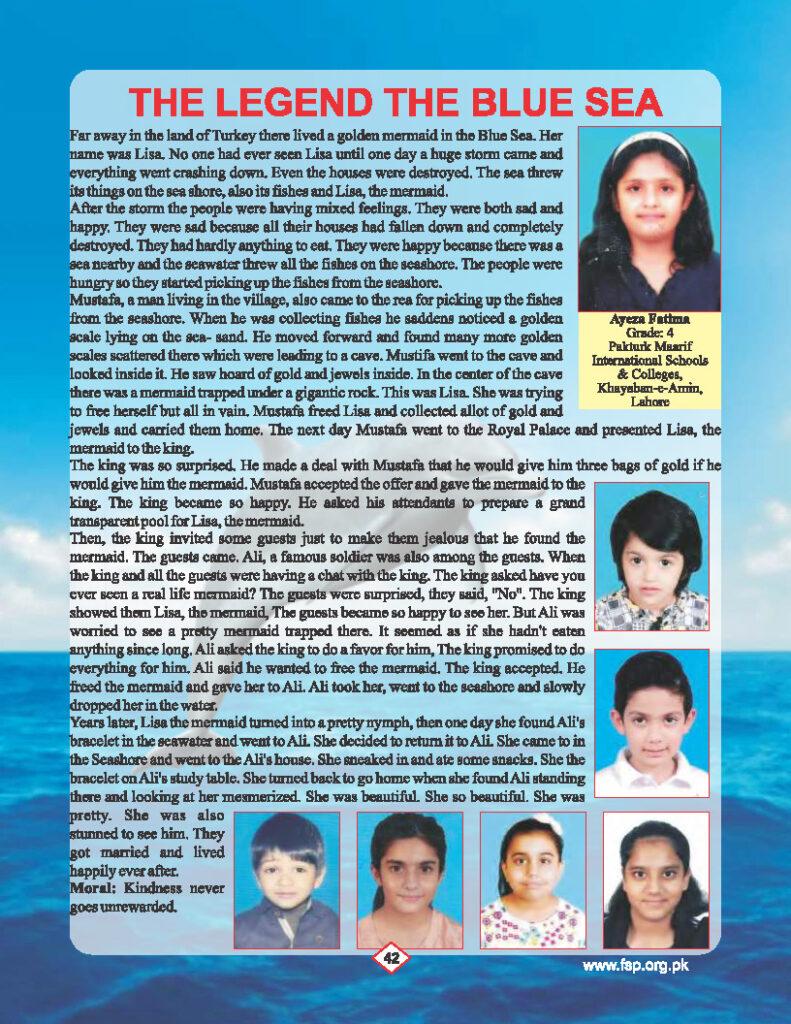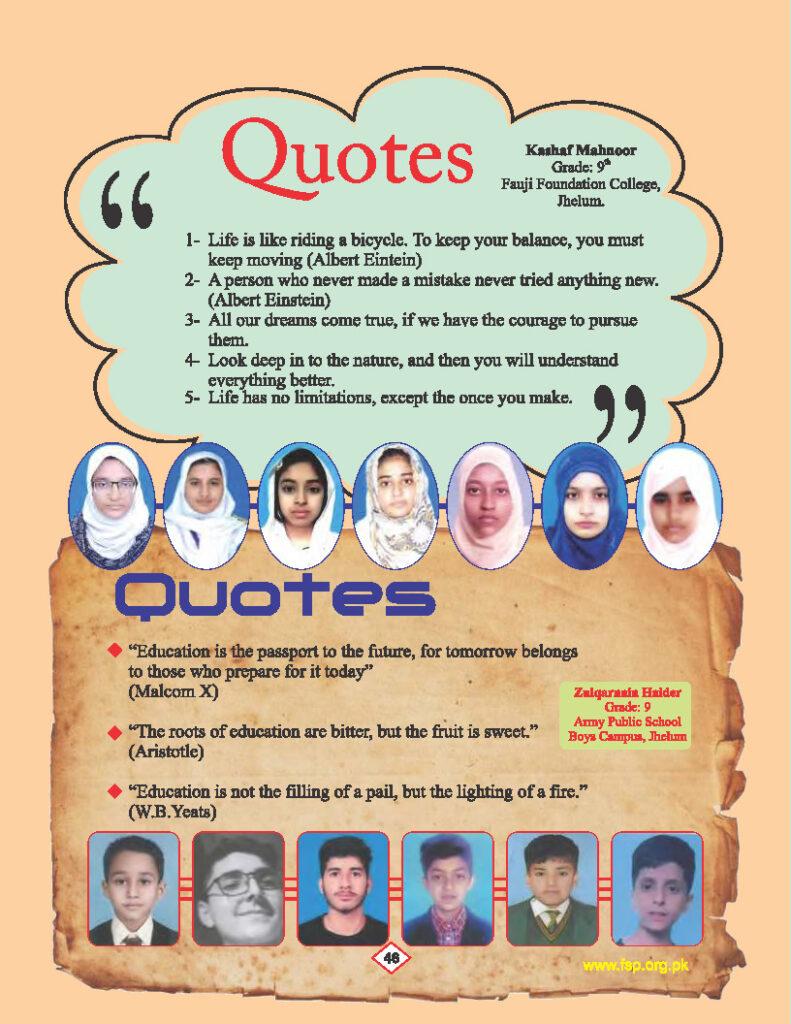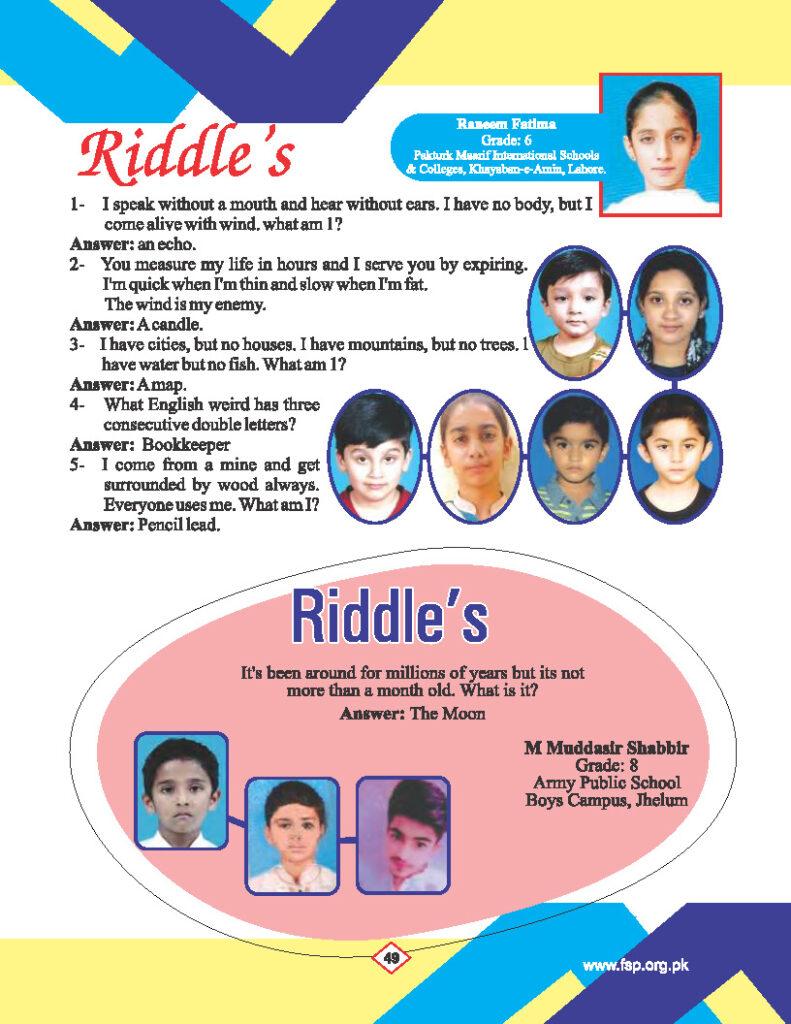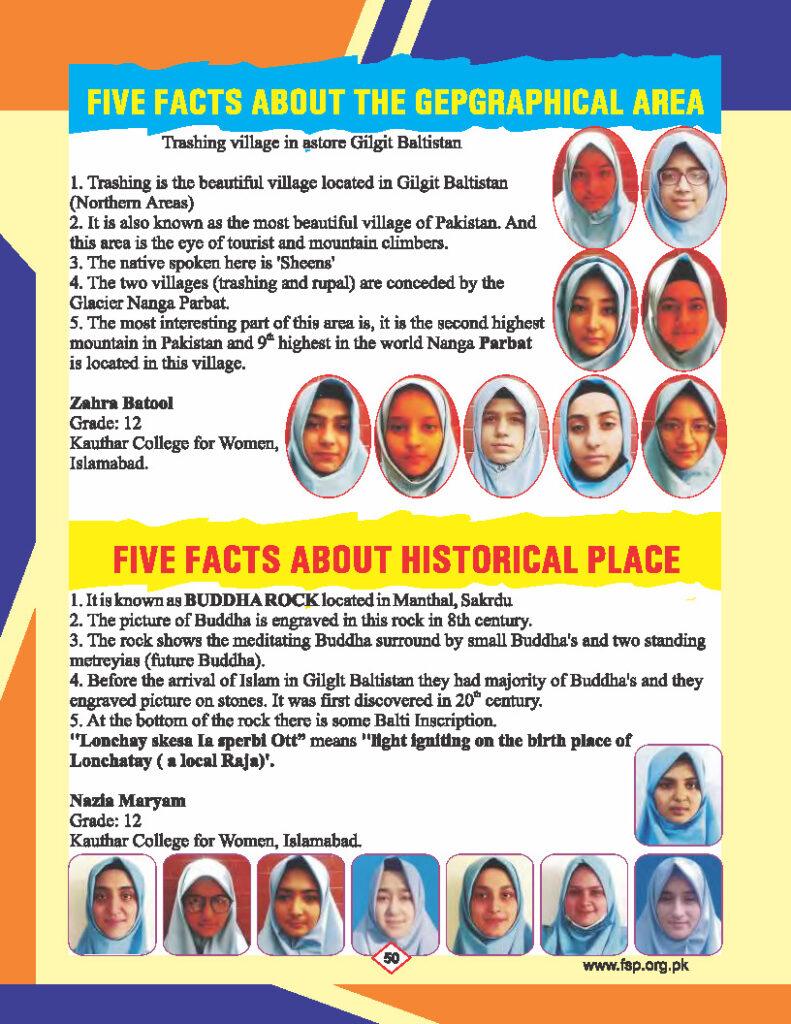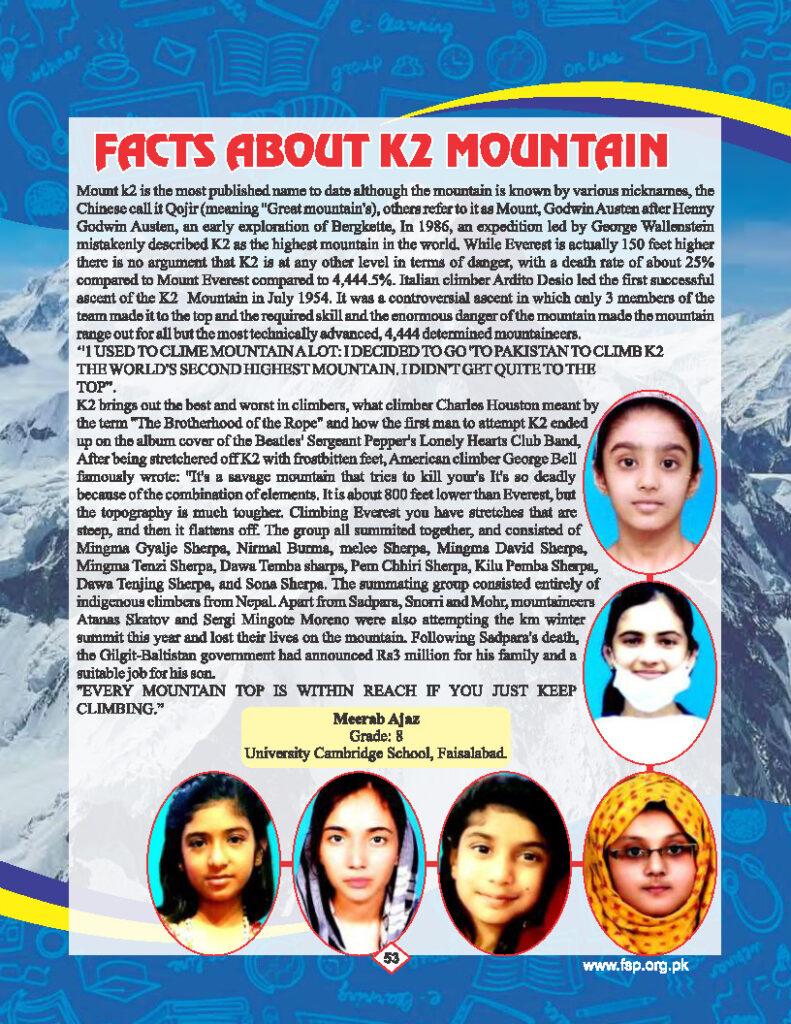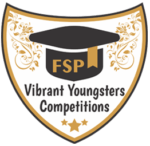SCIENCE CONTEST (VOL-19)
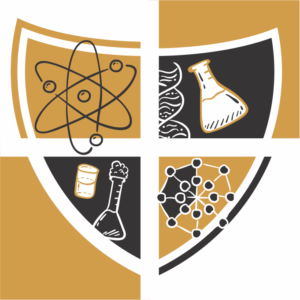
Contest Objectives
The Science Contest has been designed in such way that it helps develop scientific thinking and problem solving skills in students. Students will learn to analyze, formulate and solve different types of scientific problems.
CONTEST OVERVIEW
- The Contest consists of Multiple-Choice Questionnaire of twenty to thirty problems, depending upon the level (grade) of the student. For each problem a choice of four answers is provided.
- Contest contents are covered in the National Curriculum/Course outline available at website.
- The contests would comprise of multiple-choice questions only. The participants will have to select one best answer out of four options given. Every correct answer would earn THREE points whereas for every wrong answer ONE point would be deducted.
GENERAL INFORMATION
- All students from class 1st to 10th / O-Levels are invited to participate in FSP-SC.
- The FSP-SC will be held in all participating institutions all over country at the same time.
- We encourage participation of maximum number of students from public & private schools.
- Schools should not refuse any student to participate in the Contest who is willing to pay the fee.
- Registration includes a fee of Rs. 1000 per student which covers the costs of organizing the Contest. There is no registration fee for institution.
- All schools in Pakistan are welcome to host FSP-SC by registering their students in the Contest.
- Contest will be held in your own institution under the supervision of Principal.
- The competition questions are selected by National FSP educationists.
- Students participate at their grade level or at a higher level (if they attend accelerated Science programs at their schools).
- The competition has a form of a multiple choice test. You may see National Science Curriculum for preparation/Course outline available at website.
- At each level of participation the first prize is awarded at the country level to the students who earn the largest sum of points at their level. Likewise the first prize at provincial and school levels are also awarded. In addition several other prizes are awarded at each level of participation.
- All participating students receive a certificate.
- Students compete in 10 grades.
Famous Students Platform (FSP) VIBRANT YOUNGSTERS Competitions has already introduced ONLINE REGISTRATION SYSTEM to facilitate the institutions. The participating institutions are encouraged to get their institution and participating students registered through this online system.
Instructions for representative:
- Be sure to use a valid and current email address so that we can use it to contact you at any point before, during and after the contest, if necessary.
- Minimum Participation of 10 students from a participating class is MUST. There is no maximum limit; institutions can register as many students from a class as they wish.
- The last date of submitting the registration form is 20 March 2025.
- Thereafter no registration will be accepted.
- The Contest will be held on 23 April, 2025. (10:00 AM).
- Result will be declared on 19 May, 2025.
- The participation fee is Rs. 1000 per participant, which can be paid through Bank Draft/Pay Order, drawn in favor of FSP VIBRANT YOUNGSTERS There is no registration fee for institution.
OR
- The fee can also be directly transferred to our
A/C titled: FSP VIBRANT YOUNGSTERS
A/C No.: 0203900271540001
IBAN: PK72BKIP0203900271540001
Bank Name: BANK ISLAMI
Branch: LAHORE.
- Registration will be confirmed after receiving fee and the fee once paid is non-refundable and non-transferable.
- You may print filled registration form and sent us along with original Bank Draft/Pay Order at the following address:
FSP VIBRANT YOUNGSTER’S COMPETITIONS
12 Kabir Street Urdu Bazar, Lahore.042-7123334, 0336-4809808
National Toppers
- Gold Medal
- Smart Watch
- Distinction Certificate
- Certificate of Participation
- Complimentary Prize
Provincial Toppers
- Silver Medal
- Wireless Neckband
- Distinction Certificate
- Certificate of Participation
- Complimentary Prize
School Toppers
- Bronze Medal
- Drawstring Bag
- Distinction Certificate
- Certificate of Participation
- Complimentary Prize
Awards for Participating Institutes
The awards for participating institutes include but not limited to:
• Certificate of Acknowledgement
• Certificates and Shield / Souvenir for Principal of the year
• Educational Leadership Award – Shield / Souvenir for Principals of distinction holders’ institutes
• High Achievers Award – Shield / Souvenir with highest participation nationwide
• Placement of Name, Photo along-with school details of Principals of Position holders / winners at FSP website and annual publications
Awards for Teachers / Coordinators
• Special Cash Award with highest participation Nationwide
• Honorarium
• Certificate of Honour
• Educational Leadership Award – Shield / Souvenir for Teachers / Coordinators of distinction holders’ institutes
• High Achievers Award – Shield / Souvenir for Teachers / Coordinators with highest participation nationwid
For any further assistance, you can contact Vibrant Youngsters office by e-mail at info@fspcompetitions.org, phone: +92-42-37123334, cell: +92-336-4809808, +92-304-1404004.
Course Outline
INTERNATIONAL FSP SCIENCE CONTEST
Vibrant Youngsters Level (Grade I & II)
1. Human Body
– We have a head, body, arms, and legs.
– Our senses help us see, hear, smell, taste, and feel.
– We need to take care of our body by eating well, exercising, and sleeping.
2. Plants
– Plants are living things that grow in the ground.
– They need water, sunlight, and air to grow.
– Plants give us oxygen, food, and shade.
3. Animals
– Animals are living things that move and eat.
– They have different homes, like nests, cages, or dens.
– Animals need food, water, and air to survive.
4. Our Universe
– The universe is everything around us, including stars, moon, and sun.
– The Earth is our home planet, and it rotates around the sun.
– We see different things in the sky, like clouds, birds, and airplanes.
5. Matter
– Matter is anything that takes up space and has weight.
– Examples: toys, books, chairs, and even YOU!
6. Light
– Light is what makes things visible.
– We get light from the sun, moon, and lamps.
– Light helps us see and read.
7. Sound
– Sound is what we hear.
– We make sounds by talking, clapping, or playing music.
– Sounds can be loud or soft.
8. Air
– Air is all around us, and we need it to breathe.
– Air is invisible, but we can feel it when it moves (wind).
– We need air to live.
9. Water
– Water is a liquid that we need to drink and wash.
– We find water in rivers, lakes, and oceans.
– Water is essential for plants and animals too.
10. Weather
– Weather is what’s happening outside, like sunshine, rain, or wind.
– We have different seasons, like summer, winter, autumn, and spring.
– Weather affects our daily lives.
11. Measuring Units
– We use units to measure things, like length (cm, m), weight (kg, g), and time (hours, minutes).
– Measuring helps us compare and understand things better.
12. Living and Non-Living Things
– Living things move, grow, and need food and water (plants, animals, humans).
– Non-living things don’t move, grow, or need food and water (toys, chairs, rocks).
Vibrant Youngsters Level (Grade III & IV)
1. The Human Body
– Our body is made up of different systems (skeletal, muscular, nervous).
– We have five senses (sight, hearing, taste, smell, touch).
– We need to take care of our body by eating healthy, exercising, and sleeping well.
2. Plants and Animals
– Plants make food from sunlight, water, and air.
– Animals need food, water, and shelter to survive.
– We can classify plants and animals into different groups.
3. Food and Nutrition
– We need nutrients (carbohydrates, proteins, fats) to stay healthy.
– Fruits, vegetables, whole grains, and lean proteins are healthy food choices.
– We should drink plenty of water and limit sugary drinks.
4. Matter and its States
– Matter can be solid, liquid, or gas.
– Examples: ice (solid), water (liquid), steam (gas).
– Matter can change state when heated or cooled.
5. Force, Work, and Energy
– A force is a push or pull that can make things move.
– Work is done when a force is applied to move an object.
– Energy is the ability to do work (e.g., running, cycling).
6. Transport and Communication
– We use different modes of transport (walking, cycling, cars, buses).
– Communication helps us share ideas and messages (talking, writing, drawing).
– We can use technology (phones, computers) to communicate.
7. Our Environment
– Our environment includes living and non-living things (plants, animals, air, water).
– We need to take care of our environment to keep it clean and healthy.
– We can reduce, reuse, and recycle to help protect the environment.
8. Electricity
– Electricity is a form of energy that powers devices (lights, computers).
– We use electrical circuits to connect devices to a power source.
– We should be careful when using electricity and follow safety rules.
9. Air and Water
– Air is essential for breathing and living.
– Water is vital for drinking, washing, and growing plants.
– We should conserve water and keep the air clean.
Vibrant Youngsters Level (Grade V & VI)
1. The Human Body: Anatomy – Facts and Functions
– The human body is made up of systems (skeletal, muscular, nervous, circulatory).
– Each system has specific functions (e.g., skeletal system provides support).
– Organs work together to maintain overall health.
2. Structure and Functions of Plants
– Plants have roots, stems, leaves, and flowers.
– Roots absorb water and nutrients, stems provide support, leaves make food through photosynthesis.
– Plants undergo photosynthesis, respiration, and transpiration.
3. Classification of Plants and Animals
– Plants are classified into groups (monocots, dicots, gymnosperms).
– Animals are classified into groups (vertebrates, invertebrates, mammals, birds).
– Classification helps us understand relationships and characteristics.
4. Pollution
– Pollution is the contamination of air, water, or land.
– Types of pollution: air (smog, greenhouse gases), water (chemicals, waste), land (litter, waste).
– We can reduce pollution by recycling, conserving resources, and using eco-friendly products.
5. Force and Motion
– A force is a push or pull that can cause motion.
– Types of forces: friction, gravity, magnetism.
– Motion can be described in terms of speed, velocity, and acceleration.
6. Simple Machines
– Simple machines are devices that make work easier (lever, pulley, wheel and axle).
– Machines can change the direction or amount of force.
– Examples: wheelbarrow, bicycle, elevator.
7. Work and Energy
– Work is done when a force is applied to move an object.
– Energy is the ability to do work (kinetic, potential, thermal).
– Energy can be transferred from one form to another.
8. Light
– Light is a form of energy that travels in waves.
– Light behaves as both a wave and a particle (photon).
– Reflection, refraction, and diffraction are properties of light.
9. Sound
– Sound is a form of energy that travels in waves.
– Sound waves have frequency, amplitude, and wavelength.
– We can produce sound through vibration (speaking, music).
10. Magnetism
– Magnetism is a force that attracts or repels objects.
– Magnets have north and south poles.
– Electromagnets are temporary magnets made by coiling wire around a core.
11. Air and Water
– Air is essential for breathing and living.
– Water is vital for drinking, washing, and growing plants.
– We should conserve water and keep the air clean.
Vibrant Youngsters Level (Grade VII & VIII)
1. Human Anatomy
– Study of the human body structure and functions.
– Systems: skeletal, muscular, nervous, circulatory, respiratory, and digestive.
2. The Cell
– Basic unit of life.
– Cell structure: cell membrane, cytoplasm, nucleus, and organelles.
– Cell functions: metabolism, growth, reproduction, and response to stimuli.
3. Movement in Living Things
– Types of movement: voluntary (muscular), involuntary (nervous), and autonomic (automatic).
– Muscular system: skeletal and smooth muscles.
4. Nutrition in Plants and Animals
– Autotrophic nutrition (plants): photosynthesis.
– Heterotrophic nutrition (animals): ingestion, digestion, absorption, and assimilation.
5. Microorganisms
– Types: bacteria, viruses, fungi, and protozoa.
– Importance: decomposition, fermentation, and disease causation.
6. Elements and Compounds
– Elements: pure substances (e.g., hydrogen, oxygen).
– Compounds: combinations of elements (e.g., water, carbon dioxide).
7. Air and its Constituents
– Composition of air: nitrogen, oxygen, carbon dioxide, and other gases.
– Importance of air: breathing, combustion, and industrial processes.
8. Acids, Bases, and Salts
– Acids: substances that donate H+ ions (e.g., hydrochloric acid).
– Bases: substances that accept H+ ions (e.g., sodium hydroxide).
– Salts: compounds formed from acids and bases (e.g., sodium chloride).
9. Metals and Non-Metals
– Properties of metals: malleability, ductility, conductivity, and reactivity.
– Properties of non-metals: brittleness, non-conductivity, and low reactivity.
10. Friction
– Force that opposes motion between surfaces.
– Types: static, kinetic, and rolling friction.
11. Thermodynamics
– Study of heat, temperature, and energy transfer.
– Laws of thermodynamics: zeroth, first, second, and third.
12. Electricity and Magnetism
– Electricity: flow of electrons, circuits, and devices.
– Magnetism: magnetic fields, forces, and properties of magnets.
Vibrant Youngsters Level (Grades IX & X)
1. Biology and Technology
– Application of biology in technology (genetic engineering, biotechnology).
– Impact of technology on biology (medical advancements, environmental monitoring).
2. Cell Biology
– Cell structure: cell membrane, cytoplasm, nucleus, and organelles.
– Cell functions: metabolism, growth, reproduction, and response to stimuli.
– Cell division: mitosis and meiosis.
3. Microorganisms
– Types: bacteria, viruses, fungi, and protozoa.
– Importance: decomposition, fermentation, and disease causation.
– Immune system: defense mechanisms against microorganisms.
4. Classification
– Taxonomy: classification of living organisms (Kingdom, Phylum, Class, Order, Family, Genus, Species).
– Characteristics of different kingdoms (Monera, Protista, Fungi, Plantae, Animalia).
5. Environment
– Ecosystems: interactions between living and non-living components.
– Ecological balance: importance of conservation and sustainability.
– Human impact on the environment: pollution, deforestation, climate change.
6. Heredity
– Mendel’s laws of inheritance: segregation, independent assortment, and dominance.
– Genetic traits: dominant, recessive, and codominant.
– DNA structure and replication.
7. Natural Resources
– Types: renewable (solar, wind, water) and non-renewable (fossil fuels, minerals).
– Conservation and management of natural resources.
8. Structure of Atom
– Atomic number, mass number, and electron configuration.
– Periodic table: arrangement of elements based on atomic number.
9. Periodic Classification
– Classification of elements: metals, non-metals, and metalloids.
– Periodic trends: atomic radius, electronegativity, and ionization energy.
10. Chemical Reactions
– Types: synthesis, decomposition, displacement, and combustion.
– Chemical equations: balancing and stoichiometry.
11. Electrochemistry
– Electrolysis: decomposition of substances using electricity.
– Electrochemical cells: galvanic and electrolytic cells.
12. Organic and Inorganic Chemistry
– Organic compounds: hydrocarbons, functional groups, and biomolecules.
– Inorganic compounds: acids, bases, salts, and minerals.
13. Newton’s Laws of Motion
– First law (inertia): objects at rest or in motion remain so unless acted upon.
– Second law (force and acceleration): force = mass x acceleration.
– Third law (action and reaction): every action has an equal and opposite reaction.
14. Work, Energy, and Power
– Work: transfer of energy from one object to another.
– Energy: kinetic, potential, thermal, and electrical.
– Power: rate of doing work or transferring energy.
15. Simple Machines
– Types: lever, pulley, wheel and axle, inclined plane, wedge, and screw.
– Mechanical advantage: ratio of output force to input force.
16. Electrostatics
– Electric charges: positive, negative, and neutral.
– Electric fields: force per unit charge.
– Electric potential: potential difference between two points.
17. Current Electricity
– Electric current: flow of electrons.
– Resistance: opposition to electric current.
| GRADE | NO. OF QUESTIONS (MCQs) | TIME ALLOWED | MAXIMUM. MARKS |
| Vibrant Youngsters Level (Grade I & II) | 20 | 75 minutes | 60 |
| Vibrant Youngsters Level (Grade III & IV) | 25 | 75 minutes | 75 |
| Vibrant Youngsters Level (Grade V & VI) | 30 | 90 minutes | 90 |
| Vibrant Youngsters Level (Grade VII & VIII) | 30 | 90 minutes | 90 |
| Vibrant Youngsters Level (Grades IX & X) | 30 | 90 minutes | 90 |
